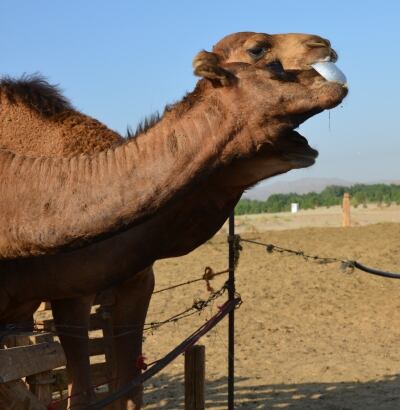Known as chal in Turkmenistan and other central Asian countries, it is reputed to have many beneficial health effects, however, in the Mangystau region of southwest Kazakhstan, which borders the Caspian Sea, those beneficial effects might be outweighed by dangerous chemicals making their way into the milk.
In a new study by Kazakhstani and Czech scientists, analysis of samples taken in Mangystau shows that camel milk often contains extremely high concentrations of toxic substances that can cause cancer or damage reproduction.
Industrial sources
The contamination comes from industrial sources – old capacitors, abandoned production sites or mines – and also from freely-accessible waste-dumping sites and hazardous waste-water reservoirs.
The authors of the report have called on state authorities to take immediate action, and are urging farmers to prevent their animals from entering polluted areas.
Dmitriy Kalmykov, director of Karaganda Regional Ecological Museum, said that samples of camel milk and shubat were taken for analysis of organic chemicals and heavy metals from six different locations in Mangystau.
“Levels of contamination, especially by polychlorinated biphenyls (PCBs) and zinc, are alarmingly high,” Kalmykov said.

Major health concerns
Kirill Osin, director of non-governmental organization Eco Mangystau, added, “PCBs can cause cancer, harm the liver or damage reproduction. Zinc is responsible for anaemia and damage of the pancreas.”
“In certain parts of Mangystau, we can observe a disturbing increase in child morbidity rates. No doubt there is a link with long-term living near the industrially polluted spots,” Osin said.
Need for action
Jindrich Petrlik, an expert on toxic substances and waste management from Arnika Association, the Czech Republic, said farmers should prevent their animals from entering industrial sites or polluted spots and from feeding on the waste, and consumers should be aware, too.
“Consumers have to be very careful when buying food and always ask for its origin,” Petrlik said.
He noted that the biggest challenge and most immediate need is for state authorities to immediately fence off polluted areas and set up a plan for the remediation of contaminated sites and the destruction of obsolete PCB oils.
“Safe clean-up and proper waste management is the only way to avoid serious health risks,” Petrlik said.
According to the report, toxic pollution in Mangystau was also responsible for the mass deaths of more than 15,000 seals in the Caspian Sea in 2000.
The new study was financed by the European Union and Transition Promotion Programme of the Czech Republic.
Scientists’ recommendations to protect Mangystau citizens from PCB contamination of food:
1. Undertake inventory of PCBs (including wastes contaminated with PCBs)
2. Inventory of sites contaminated by PCBs
3. Plan for remediation of contaminated sites and the destruction of PCBs and/or more complex destruction of waste containing persistent organic pollutants (POPs)
4. Set criteria for choosing the best technology to destroy PCBs
